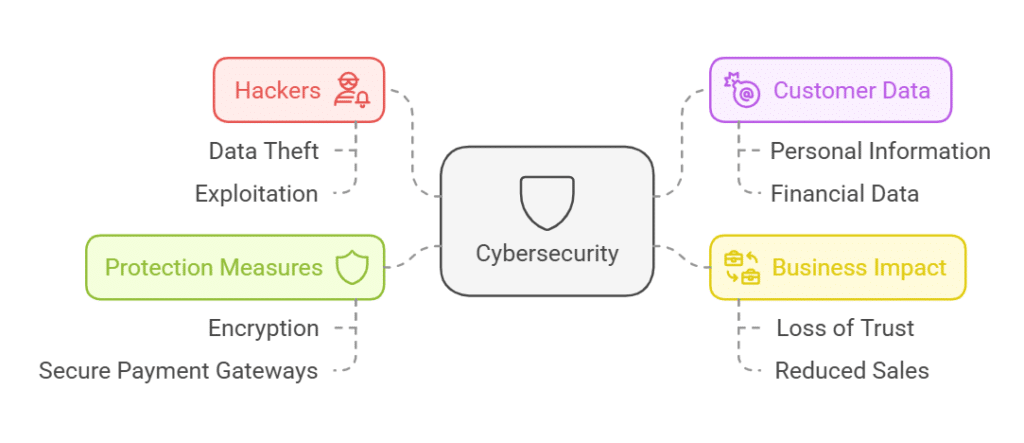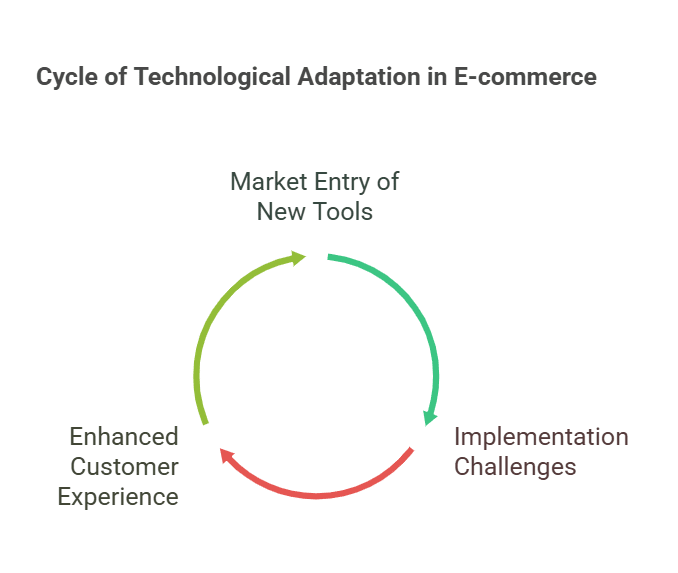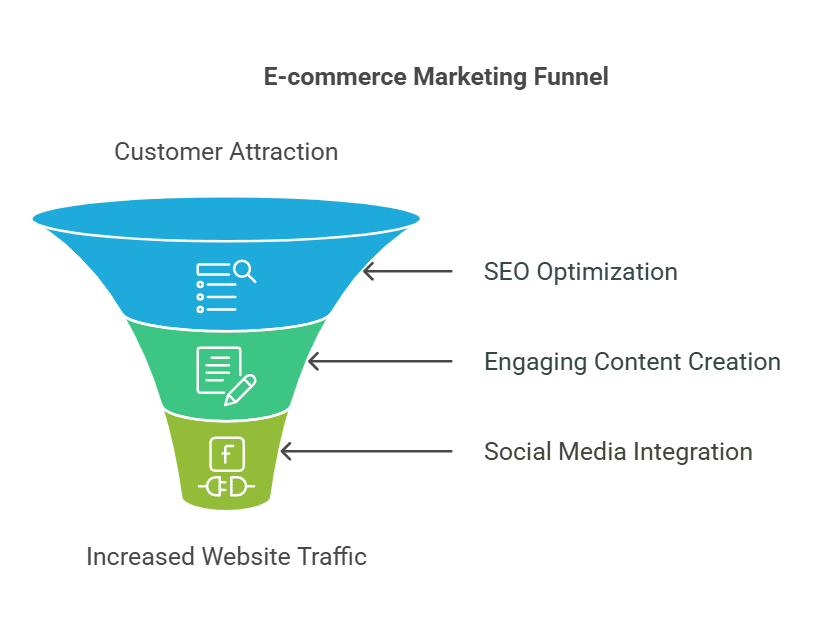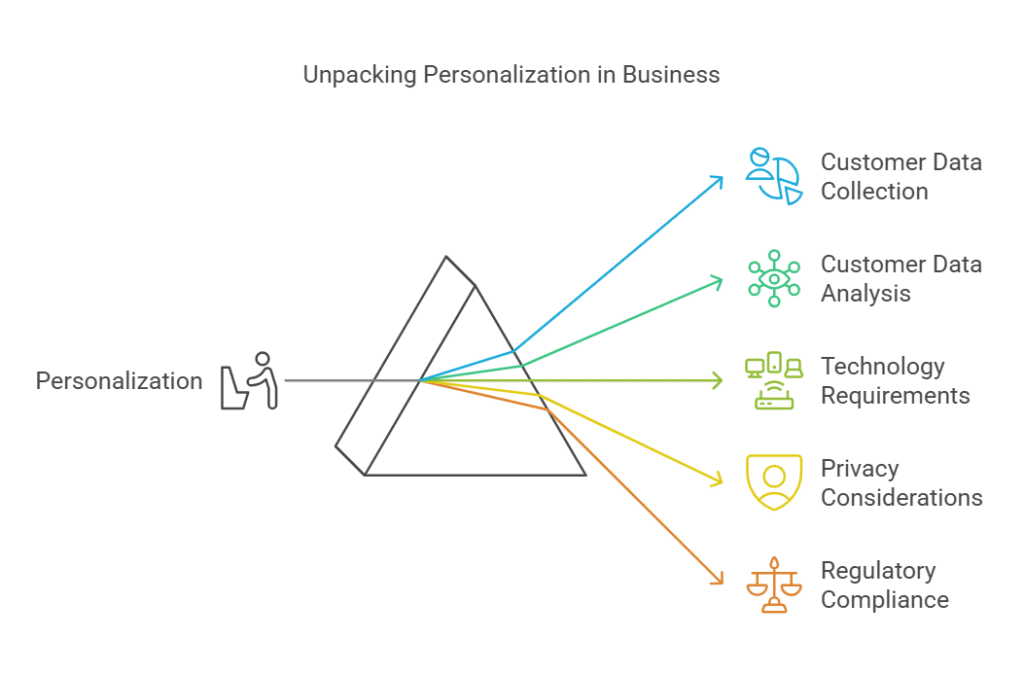E-commerce is fast growing. Online shopping has become a trend for most people because of its comfort and ease. Nevertheless, e-commerce faces many challenges, and adversely, these may affect the whole online business. Let’s explore a few of these challenges:

Credit: tech-talk.org
1. Cybersecurity Threats
Cybersecurity is a growing concern as hackers attempt to steal data, wanting customers’ personal information, which includes names, addresses, and credit card numbers. If it happens, hackers can create havoc and create mistrust, too. Customers may ditch shopping online. Businesses must safeguard their websites and have reasonable security measures such as encryption and secure payment gateways.

2. Competition
The e-commerce market stands out in the competition. Most businesses sell similar products, making it difficult to stand out. New entrants have to struggle hard to get customers. They must offer something different: low prices, best customer services, or exclusive products. Good marketing will also help. A strong online presence will increase the attraction.
3. Logistics and Shipping
Shipping is part and parcel of e-commerce. The customer expects speedy, reliable delivery. They have their products in no time. Late deliveries usually have a complaint coming their way. They may not get back to the same website again. Shipping can be expensive, too. Thus, they have to find themselves good partners in shipping.
4. Customer Trust
Trust is what is valued and appreciated in e-commerce. Most customers’ buying behaviours are based more on confidence in their products, which can’t be touched or seen before buying. Most product returns happen when customers are unsatisfied with their product; returns are expensive for businesses. Excellent customer service is a valuable aspect that can assure customers of trust. Quick responses to their queries can significantly make a difference in trust building.
5. Upgrading Technologies
Technology keeps on changing. The e-commerce houses are supposed to keep pace with the changing technologies. There are many new tools and platforms currently entering the market. Bringing them up to date is, however, very difficult and time-consuming as well as requiring a lot of money. Nevertheless, using the most recent technologies will help improve the customer experience and make shopping easier and happier for people.

6. Payment Processing
One challenge is payment processing. Most customers prefer very many payment options. They will include credit and debit cards, among others, and digital wallets. For some customers, cash on delivery might be good. Therefore, businesses must accept and provide all these payment options. Besides that, they need to give their customers a proper and secure transaction to help earn trust and increase sales.
7. Handling Returns
Customers will likely return to e-commerce. Some customers may want a product that is either unsuitable or incompatible with what they expect. Returns are expensive and take time to put in place. This is why there is a requirement for a return policy by a business, and such policies should provide for making returns easy for the customers. Happy customers are the result of this.
8. Global Reach
E-commerce, while enabling brands to sell to customers worldwide, poses challenges in international sales. Each country has its own unique set of rules and regulations. The cost of shipping is an arm-and-a-leg affair, and understanding across languages can sometimes be problematic. Currency differences can also raise prices. Businesses should appreciate these challenges and prepare to maximize their efforts in international markets.
9. Customer Service
Superior customer service is needed for e-commerce because customers might have questions and issues regarding the product or service, which include inquiries/clarifications on features, and they want answers quickly. The same happens when a question is not answered quickly enough or is unhelpful, leading to negative reviews and negatively impacting the business. It is worth it; it can offer better customer service by enhancing the customer-s-Fortnight-Award structure with a coupon. It can deliver customer care 24 hours per day and 7 days per week. Live chat and email will do wonders in making customers feel significant.

Credit: blog.kudobuzz.com
10. Marketing and SEO
Marketing is essential for e-commerce. It has the power to draw customers toward it. Besides, SEO or Search Engine Optimization works best for a website to have better search results. More people will be visiting your website due to this. Creating engaging content is, however, necessary in that. It involves proper usage of keywords, and there is another even more widespread practice of using social media in marketing.

11. Mobile-Friendly
With many people using cell phones to shop online, e-commerce websites must be mobile-friendly. It should contour well into tiny screens. Smooth navigation should be possible with it. Slow or difficult websites will drive people out. Mobile perfection holds the key to success.
12. Inventory Management
One major issue is that of inventory control. Tracking stock is what the business has to do- knowing when to order the product afresh. Profit is lost if the stock goes out. The only way cost increases is when the stock is much more in place than required. Good hourly work in inventory management software can quickly help such systems and make an organization more efficient.
13. Personalization
Consumers love personalized experiences, especially regarding recommendations of products that suit their preferences. Thus, personalization is a handy way of increasing sales at a high cost of data and technology. To personalize, a business must collect, measure, and analyze all customer data within the confines of privacy and comply with all data protection regulations.
Personalization is something that customers appreciate, mainly when the product suggestions cater to their needs. Personalization is efficient for increasing revenues, though it requires high-demand data and technology. Personalized experience requires a business to collect, measure, and analyze all customer data while ensuring that privacy is kept in mind and all data protection regulations are complied with.

14. Environmental Concerns
They want eco-friendly products and packaging. These are demands that most customers place on e-commerce organizations today, which consider environmental impact with their lay-up and sustainable materials to attract greens. Waste and carbon footprint reduction is very significant.
15. Legal Compliance
Each country or region has different laws concerning e-commerce, such as consumer rights, data protection, and even tax laws. Non-compliance can result in fines or lawsuits; thus, it is essential to be updated on the legality of the rules. Legal advice is usually required to understand complex regulations.
16. Digital Marketing Costs
Digital marketing is pricey. It requires business advertisement and promotion expenditure. Small businesses cannot compete with this. They have to stretch their budgets. However, they should plan well for maximum returns; social media advertising is also free and informative.
Frequently Asked Questions
What are the most significant drawbacks to E-commerce?
Digital marketing is pricey. It requires business advertisement and promotion expenditure. Small businesses cannot compete with this. They have to stretch their budgets. However, they should plan well for maximum returns; social media advertising is also free and informative.
How does cybersecurity affect E-commerce?
Cybersecurity threats cause data breaches, affecting customer trust in the company and tarnishing the establishment’s reputation.
Importance of Customer Trust in E-Commerce?
It is said that customer trust earns return business. It also earns positive reviews and referrals.
What Role does Logistics play in E-commerce?
Timely delivery ensures efficient logistics. This is how customer satisfaction and loyalty are enhanced.
Conclusion
E-commerce is packed with opportunities but is equally fraught with its challenges. Therefore, it becomes highly significant that challenges are understood so that opportunities can be harnessed for success. E-commerce, being an ever-evolving field, requires one to keep pace and remain adaptable.
